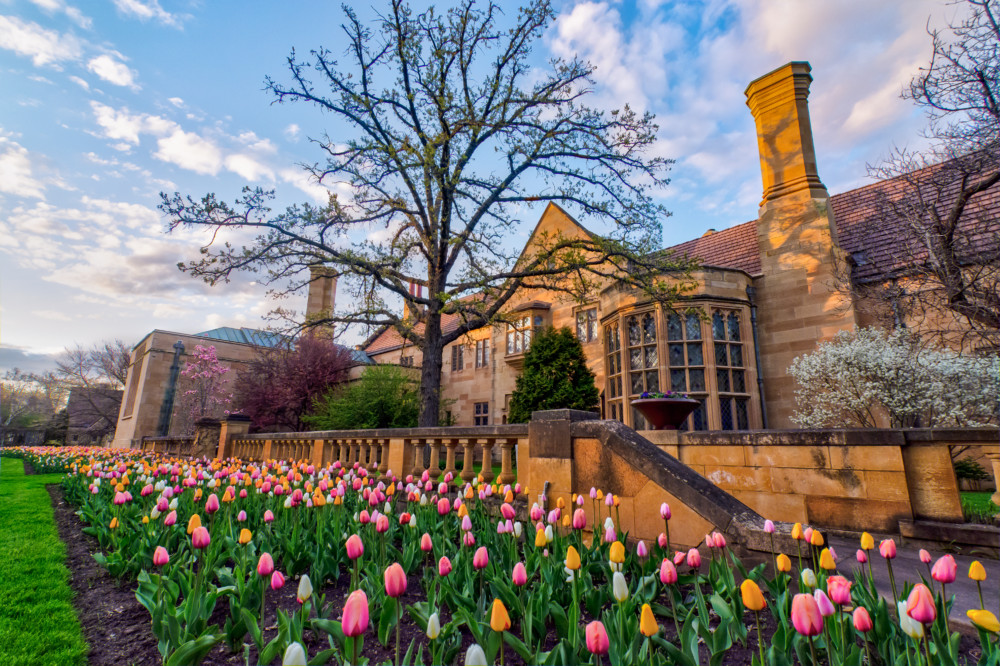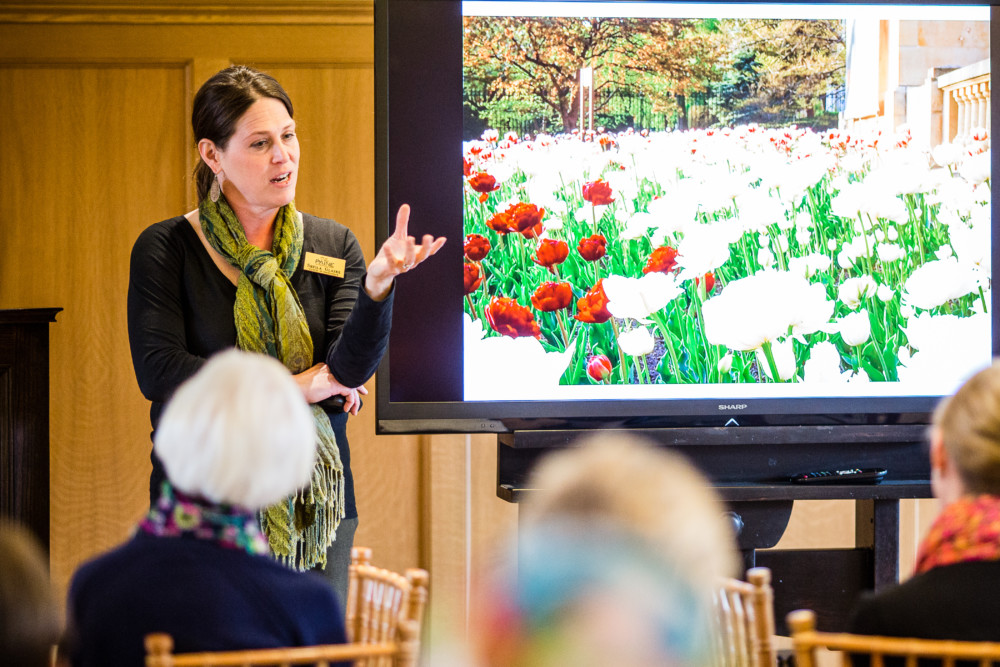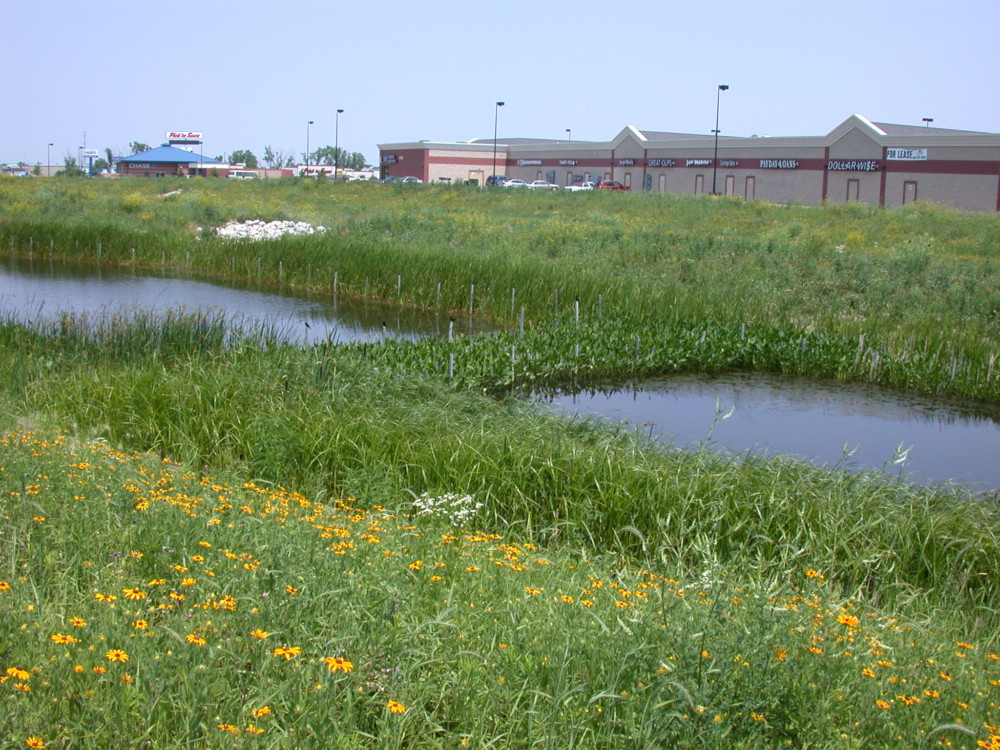Green Space Guardians
Celebrating the caretakers of our favorite outdoor spaces
One of the positives of the past year was a renewed appreciation for the outdoors. Any walk in the park, bike trip along the trails or picnic at any of our wonderful outdoor spaces was a welcome reprieve from Zoom meetings, virtual schooling and the heaviness of life in the midst of a pandemic.
The guardians of the Fox Valley’s green spaces have always done their best to keep those areas healthy and thriving, caring for them quietly behind the scenes throughout the year. With a renewed respect for the hard work that goes into maintaining and cultivating these spaces, here’s a look behind the scenes at what great garden conservation takes for each horticulturist and gardener.
Sheila Glaske, Curator of Horticulture, Paine Art Center & Gardens
Sheila Glaske, curator of horticulture at the Paine Art Center and Gardens in Oshkosh, first took an interest in horticulture in college.
“What I liked about it is that it’s really a combination of not only the science of growing things, but it’s also an art form. That combination is something that I was really interested in.”
The Paine estate features 20 garden areas for public enjoyment and education. In complement to the architecture of the Paine, the gardens are designed into outdoor “rooms,” which showcase a wide variety of plants. As Glaske explains, those gardens are intensely maintained throughout the season by herself, her staff and volunteers.
“I do feel like those plants are my patients, you know; I do stress out about them,” she says.
“It’s not as serious as a nurse,” she adds with a laugh, “but I feel kind of connected to these plants that I need to nourish through the season.”
In addition to the outdoor gardens, Glaske’s responsibilities include oversight for several of the large events at the Paine. Her team oversees the installation in the conservatory for Rooms of Blooms, a large and popular flower show held every other year that involves artistic displays of hundreds of flowers. They are also integral in setting up Nutcracker in the Castle, taking just four weeks to set up more than 70 Christmas tree displays themed after the Nutcracker ballet, as well as the Paine’s Festival of Spring, a plant sale and fundraiser that includes more than 100 vendors.
Having a hand in so many facets of the visitor experience, which provides respite for many, is something Glaske is proud of and considers one of her career successes.
“And then I think it’s also — for me — the success is in the inspiration for people’s own gardens, introducing new varieties they might not have known about, or the combinations of plants that they may not have thought about putting together.”
Thomas Duffey, City of Appleton Horticulturist
Thomas Duffey is the City of Appleton’s horticulturist. He manages the more obvious responsibilities for his position, including the care and maintenance of ornamental horticulture in the city, like the flower beds and planters that visitors and residents enjoy in downtown Appleton. However, his role also includes something many residents probably give little thought to — the management of a fairly large amount of acreage around stormwater retention ponds, stream restorations, biofilters and the like.
Duffey says he is also charged with communicating with the DNR and Army Corps of Engineers for mitigation sites, where they’ve impacted wetlands through city projects and must in return mitigate that damage by creating wetland pockets or something similar.
Following work for a private landscaper early in his career, and then with the forestry survice in Watersmeet, Michigan as a summer intern, Duffey was hired by the City of Appleton in the Forestry Division. For the first nine years, Duffey was an arborist. When the department created the position of horticulturist, Duffey took an interest and was placed into that position. His unique role with the City of Appleton ties directly to his lifelong interest in plants.
“I always think it was my grandmother, who was a real good gardener, who got me on the path of being interested in plants,” he explains. “She was always showing me stuff when I was a little, tiny kid, and I think that’s where I got the interest.”
Now with more than three decades in his position, a few of Duffey’s recommended green spaces throughout the city and its outskirts include the popular Apple Creek Trail; Memorial Park for its major stream restoration and nice trail; and the quarter-mile stream restoration done north of County Highway JJ. In a few years, he says the best is yet to come with the Leona Street stormwater pond project.
“It actually has a pretty large stormwater pond, with the accompanying side slopes, but the creation of that site led to what is called an uneconomical lot,” he says. “It’s a plot of land that was going to be bound on all sides and couldn’t really be sold for anything. So, we’re doing a forest planting in there. That site, taken on a whole, is going to be large and multifaceted, and it’s going to have lots of trails going through it. It’s going to be connected to the biking trail system that goes through town, so that’s going to be another plus, but that’s just getting built now.”
“About five years from now that’s really going to be a fantastic site.”
Jack and Marty Voight, Friends of Butterfly Gardens
Since 2013, thousands of visitors have been welcomed by Jack and Marty Voight to their butterfly garden and education center off Highway 47, north of Appleton. Their mission is to encourage everyone to have a backyard butterfly garden that will attract not only butterflies, but also encourage the health and well-being of all pollinators.
Since the garden is mostly wetlands prairie, Jack and Marty try to introduce plants that will benefit the pollinators and also thrive in the growing environment. It takes focused planning, as Jack and Marty ensure their pollinators are kept happy throughout the growing season.
“Prairie plants will bloom for about three weeks and then fade away,” Jack explains, “so you need a replacement. I would say we have a staple of about six or seven plants that will be available for bees and butterflies to nectar on. We don’t concentrate on one plant. When I created this butterfly maze, I had to kind of see what would grow and be in bloom from the very beginning of May through September.”
Jack and Marty have also educated the public on the importance of planting milkweed. During 2020, the garden spaces were closed to the public, but Jack and Marty still did their best to keep the community involved, selling monarch growing kits. The take-home kits included three monarch caterpillars, two small milkweed plants, information on the life cycle and care instructions, and a large mesh cage. Education is central to everything the Voights do.
“We like to educate people before they go into the hoop house and the gardens,” Marty explains of a typical visit. “I’m a teacher, so the education part is very important to me.”
Moving forward, the Voights have transitioned their business model from a for-profit to a nonprofit entity, now known as “Friends of Butterfly Gardens.” The hope is that the gardens will eventually receive state park designation, a first for Outagamie County and what they believe will be a first in the nation. As that comes together, the Voights are excited about the growing interest in pollinators — and the outdoors — they’ve observed in visitors from across the United States and other countries.
“I think the most significant part is that more and more people are beginning to realize that we have a viable place to view monarchs and other butterflies and other species, and [to provide] family enjoyment out in the environment, as opposed to being stuck at home,” Jack states. “Being a rural person, I enjoy being out in the openness of nature, and I still have my butterfly collection from 1960 when I was a kid. So, I think it’s important that more and more people will be able to begin to realize that computers are good, but so is being outside among nature
















Leave a Comment